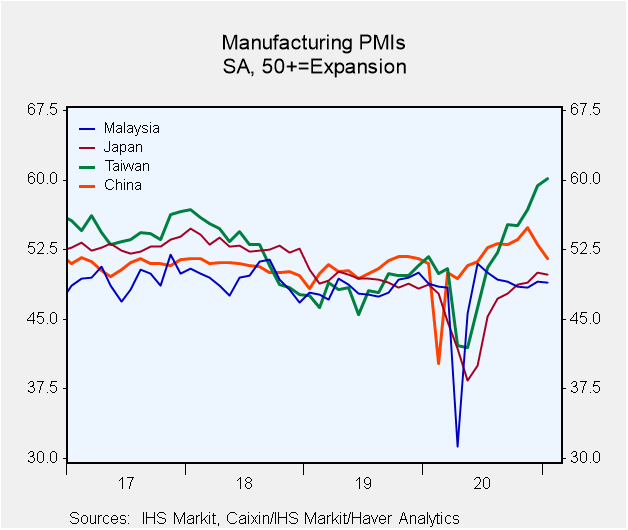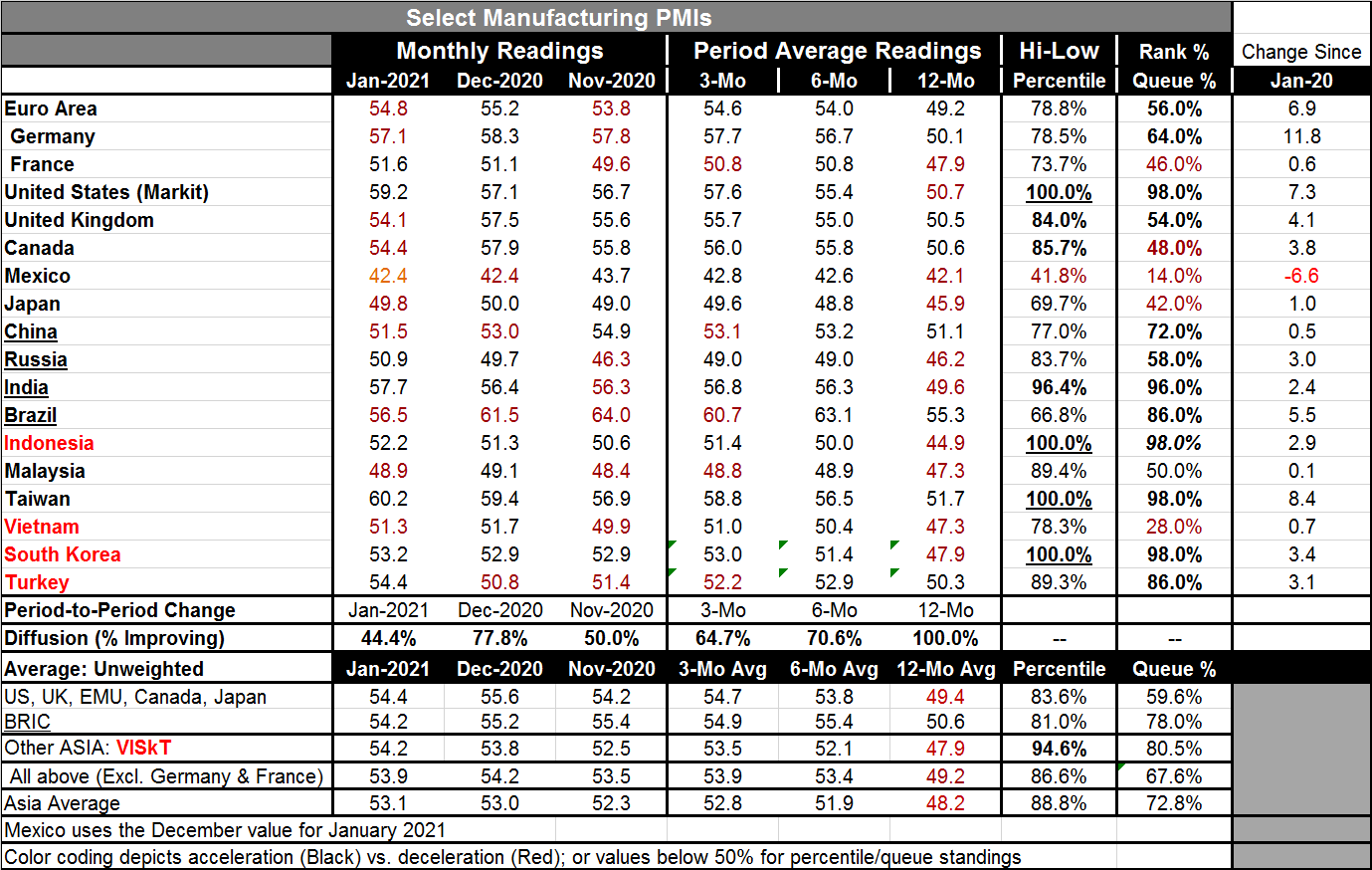 Global| Feb 01 2021
Global| Feb 01 2021Manufacturing Gradually Finds More Solid Ground
Summary
Nine reporters in the table have manufacturing sectors that took a step back in January while eight improved on the month. The unweighted average PMI reading edged lower to 53.9 in January from 54.2 in December. In Asia, the [...]
 Nine reporters in the table have manufacturing sectors that took a step back in January while eight improved on the month. The unweighted average PMI reading edged lower to 53.9 in January from 54.2 in December. In Asia, the unweighted average moves higher by a tick. There was a step back for manufacturing in the euro area in January. The Markit gauge for the U.S. improved (while the ISM, not shown here, backtracked). There is a good deal of PMI shifting about this month without a whole lot of trend. The graph features selected Asia reporters and their results are all over the map in terms of levels as well as changes.
Nine reporters in the table have manufacturing sectors that took a step back in January while eight improved on the month. The unweighted average PMI reading edged lower to 53.9 in January from 54.2 in December. In Asia, the unweighted average moves higher by a tick. There was a step back for manufacturing in the euro area in January. The Markit gauge for the U.S. improved (while the ISM, not shown here, backtracked). There is a good deal of PMI shifting about this month without a whole lot of trend. The graph features selected Asia reporters and their results are all over the map in terms of levels as well as changes.
Recently PMI gauges have tended to show more improvements month-to-month than deteriorations. However, the average diffusion value that measures improvement period-to-period shows all reporters improving over 12 months compared to 12 months before that and only 70.6% are improving over sixmonths compared to their level of six months ago, Over three months, that percentage ratio slips to 64.7% improving. So the rate of progress is slowing, but that is not surprising as PMI values move higher and leave fewer below 50, a level that signals contraction.
There are only five readings with decelerating three-month averages in January compared to six-month (France, China, Brazil, Malaysia, and Turkey). Also, over three months, only four reporters have a three-month average below 50 (Mexico, Japan, Russia, and Malaysia). Over six months, all PMIs are improving and only four are below 50 (same four).
There is clear healing in the manufacturing sector- a marked contrast with services. Four countries have their highest PMI readings since January 2016. Five countries have queue standings that are in the top 5% of their respective queues of data since January 2016. Only four countries have queue standings below their 50th percentile (below their medians for the period).
Looking back at the changes since January last year, just before the virus struck, all countries in the table have manufacturing reading that are stronger on balance except Mexico. Germany has done the best, followed by Taiwan, the U.S. and the euro area as a whole. Beside Mexico, the weakest rebound readings are from Malaysia, China, France, and Vietnam.

Robert Brusca
AuthorMore in Author Profile »Robert A. Brusca is Chief Economist of Fact and Opinion Economics, a consulting firm he founded in Manhattan. He has been an economist on Wall Street for over 25 years. He has visited central banking and large institutional clients in over 30 countries in his career as an economist. Mr. Brusca was a Divisional Research Chief at the Federal Reserve Bank of NY (Chief of the International Financial markets Division), a Fed Watcher at Irving Trust and Chief Economist at Nikko Securities International. He is widely quoted and appears in various media. Mr. Brusca holds an MA and Ph.D. in economics from Michigan State University and a BA in Economics from the University of Michigan. His research pursues his strong interests in non aligned policy economics as well as international economics. FAO Economics’ research targets investors to assist them in making better investment decisions in stocks, bonds and in a variety of international assets. The company does not manage money and has no conflicts in giving economic advice.






